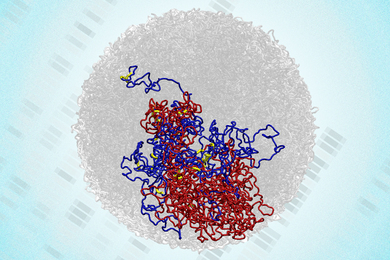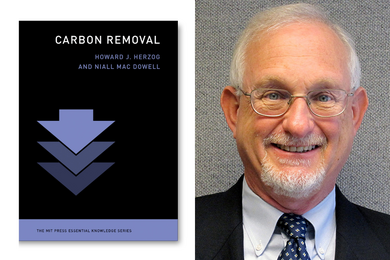An MIT device that could drastically cut smog-producing emissions from cars and other vehicles is a significant step closer to moving from the lab to the road. The device, known as a plasmatron, is expected to be inexpensive and readily compatible with present engine technology.
Recently the plasmatron was installed in a commercial car engine for the first time. It operated reliably over two weeks, and met its inventors' expectations for reducing emissions of pollutants, particularly nitrogen oxides (NOx). NOx emissions were reduced by two orders of magnitude compared to the normal emissions of an engine running on gasoline.
"This is a major milestone in showing the feasibility of a plasma-boosted fuel reformer for reducing vehicle pollution," said Daniel R. Cohn, head of the Plasma Technology Division at the Plasma Science and Fusion Center (PSFC). Dr. Cohn will present the work November 18 at a meeting of the American Physical Society.
Now that the researchers have successfully coupled the plasmatron to an engine, the next step is to install the device in an actual vehicle. "We're ready to take the show on the road," he said.
Dr. Cohn's colleagues on the current work are PSFC principal research engineer Leslie Bromberg, PSFC research engineer Alexander Rabinovich, PSFC visiting scientist Nikolai Alexeev, and five engineers from Oak Ridge National Laboratory, where the engine tests were conducted.
HOW IT WORKS
Essentially the plasmatron, which is about the size of a wine bottle, works as an onboard "oil refinery." It converts a variety of fuels into high-quality hydrogen-rich gas. Adding only a small amount of such gas to the fossil fuel powering a car is known to significantly decrease emissions of pollutants like NOx.
Fuel injected into the plasmatron is exposed to an electric discharge that turns the fuel and surrounding air into an electrically charged gas, or plasma. The plasma accelerates reaction rates allowing the production of hydrogen-rich gas.
Plasmatrons have traditionally been used to produce hydrogen-rich gas for industrial applications like metallurgical processing. They are usually quite large -- about the size of a car engine -- and require large amounts of electrical power. "To our knowledge we're the first to develop a plasma-boosted fuel reformer that's this small and that operates at low power (less than one kilowatt)," said Dr. Cohn.
CURRENT RESULTS
"The real achievement of the recent tests was our ability to run our new plasmatron connected to an engine for long periods of time," Dr. Rabinovich said. "We ran it reliably for four to six hours a day over two weeks, with no traces of deterioration."
In addition, the researchers found that emissions of key pollutants were significantly reduced. For example, NOx was reduced from an average 2,700 parts per million (ppm) without the plasmatron to 20 ppm with the device.
"This is the first time anyone's been able to integrate a compact plasma-boosted fuel reformer with an auto engine and show a large reduction in pollutants," Dr. Cohn said. In an actual vehicle these reductions will not be as dramatic (due to help from the catalytic converter), but the researchers still expect to reduce NOx emissions by a factor of 10.
The researchers believe that the plasmatron used in the current tests has the basic features needed for commercial attractiveness. For example, they estimate that the entire plasmatron system could cost no more than $200-$300. Moreover, the only component that may need to be replaced -- an electrode -- is very inexpensive and can be changed as easily as a spark plug.
The next step in the work -- placing the plasmatron in an actual vehicle -- will require integrating the system to the vehicle's onboard computer. Dr. Rabinovich also noted that "the plasmatron will require some additional room, but there's no need for a major redesign of the vehicle." The team hopes to put the device in a bus within a year.
VARIETY OF FUELS
The recent engine tests were conducted using gasoline. However, laboratory tests with the plasmatron alone have shown that the device can also process diesel and biocrude fuels.
Although in principle the device could process all of the fuel for a vehicle, the researchers say that it's most cost-effective to convert only a fraction of the fuel into hydrogen-rich gas. That's because even though such gas increases the efficiency of an engine, the plasmatron itself consumes energy. The best results in the recent tests were achieved by converting 25 percent of the gasoline into hydrogen-rich gas.
The plasmatron grew out of work conducted over 15 years ago by Dr. Rabinovich, who was then an engineer in the former Soviet Union. Dr. Alexeev, a colleague of Dr. Rabinovich's at the time, came to MIT this year to join his friend on the team (he has since returned to Russia). The plasmatron also owes a debt to basic research at MIT on fusion power, which uses plasmas.
The researchers have five patents related to the plasmatron. The work is supported by the DOE Office of Heavy Vehicle Technologies.
A version of this article appeared in MIT Tech Talk on November 17, 1999.





